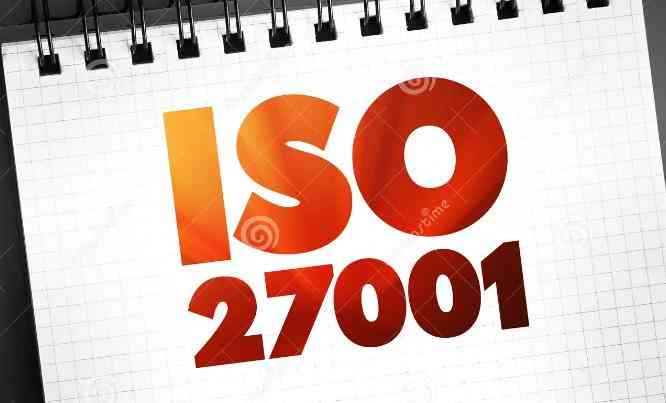|
UDC 677.06 : 667.21
BRIEF HISTORY
Amendment 4 to IS0 Recommendation R 105/1-1959 was drawn up by Technical Committee ISO/TC 38,
Textiles, and circulated to the Member Bodies in February 1973.
It has been approved by the Member Bodies of the following countries :
Australia Hungary South Africa, Rep. of
Belgium India Sweden
Brad Ireland Switzerland
Bulgaria Israel Thailand
Canada Japan Turkey
Czechoslovakia Net herlands United Kingdom
Egypt, Arab Rep. of New Zealand U.S.A.
Finland Norway U.S.S.R.
France Poland
Germany Romania
No Member Body expressed disapproval of the document
Amendment 4 - January 1975 - to IS0 Recommendation R 105/1-1959
Amendment 4
to IS0 Recommendation R 105/1-1959
TESTS FOR
COLOUR FASTNESS OF TEXTILES
FIRST SERIES
Pages 42 and 43 : Part 17
Delete the entire text and substitute the following
Part 17
COLOUR FASTNESS TO HOT PRESSING
1. PURPOSE AND SCOPE
This method is intended for assessing the resistance of the colour of textiles of all kinds and in all forms to ironing
and to processing on hot cylinders.
Tests are given for hot pressing when the textile is dry, when it is wet and when it is damp. The end use of the
textile usually determines which test should be made.
---------------------- Page: 1 ----------------------
ISO/R 1 OS/l- 1959/A4-1975 (E)
2. PRINCIPLE
The specimens are pressed with a heating device of specified temperature and mass for a specified time
2.1 Dry pressing. The dry specimen is pressed.
Damp pressing. The dry specimen is covered with a wet undyed cotton cloth and pressed.
2.2
2.3 Wet pressing. The upper surface of the wet specimen is covered with a wet, undyed cotton cloth and pressed.
2.4 The change in colour and the staining of the undyed cloths are assessed with standard grey scales immediately
and again after a period of exposure to air in the standard atmosphere.
3. APPARATUS AND REAGENIS
3.1 Heating device, providing even heat transfer to the specimen from the top by close contact at a controlled
temperature (see clauses 7.1 and 7.2) and giving a pressure on the specimen of 4 f 1 kPa* (see clause 7.4).
3.2 A smooth asbestos sheet of thickness 3 to 6 mm (see clause 7.2 and 7.3).
3.3 Undyed flannel of mass per unit area approximately 260 g/mZ. Two layers of this material are used to make
a pad of thickness approximately 3 mm. Similar smooth wool fabrics or felt can be used to give a pad of
thickness approximately 3 mm.
An undyed, bleached and unmercerised cotton cloth, of mass per unit area 100 to 130 g/m2 and with a
3.4
smooth surface.
Grey scale for assessing change in colour and staining of the undyed cloths**
3.5
4. SPECIMEN
4.1 If the textile to be tested is fabric, use a specimen 100 mm X 40 mm
4.2 If the textile to be tested is yarn, knit it into fabric and use a piece 100 mm X 40 mm, or wind it closely
round a piece of thin inert material measuring 100 mm X 40 mm to form a layer having only the thickness
of the yarn.
4.3 If the textile to be tested is loose fibre, comb and compress enough of it to form a sheet 100 nim X 40 mm
and sew the sheet on a piece of cotton cloth to support the fibre.
5. PROCEDURE
The following temperatures are used (see clause 7.1)
5.1
110 f 2 “c
150 f 2 OC
200 f 2 “c
When necessary, other temperatures may be used, provided they are specially noted in the report.
5.2 Specimens of materials that have been subjected to any heat or drying treatment must be allowed to
condition in the standard atmosphere for testing textiles***, i.e. 65 f 2 5% relative humidity and a temperature
of 20 f 2 OC, before they are tested.
* 1 kPa = IO3 N/m2 10 gf/cm*
**
See also : Part 1 : “General principles of testing”.
Part 2 . “Grey scale for assessing change in colour”.
Part 3 : “Grey scale for assessing staining”.
***
See IS0 139, Textiles - Standard atmospheresfor conditioning and testinx.
2 --
---------------------- Page: 2 ----------------------
ISO/R 105/1-1959/A4-1975 (E)
5.3 The bottom plate of the heating device is covered with asbestos sheeting (see claus
...














